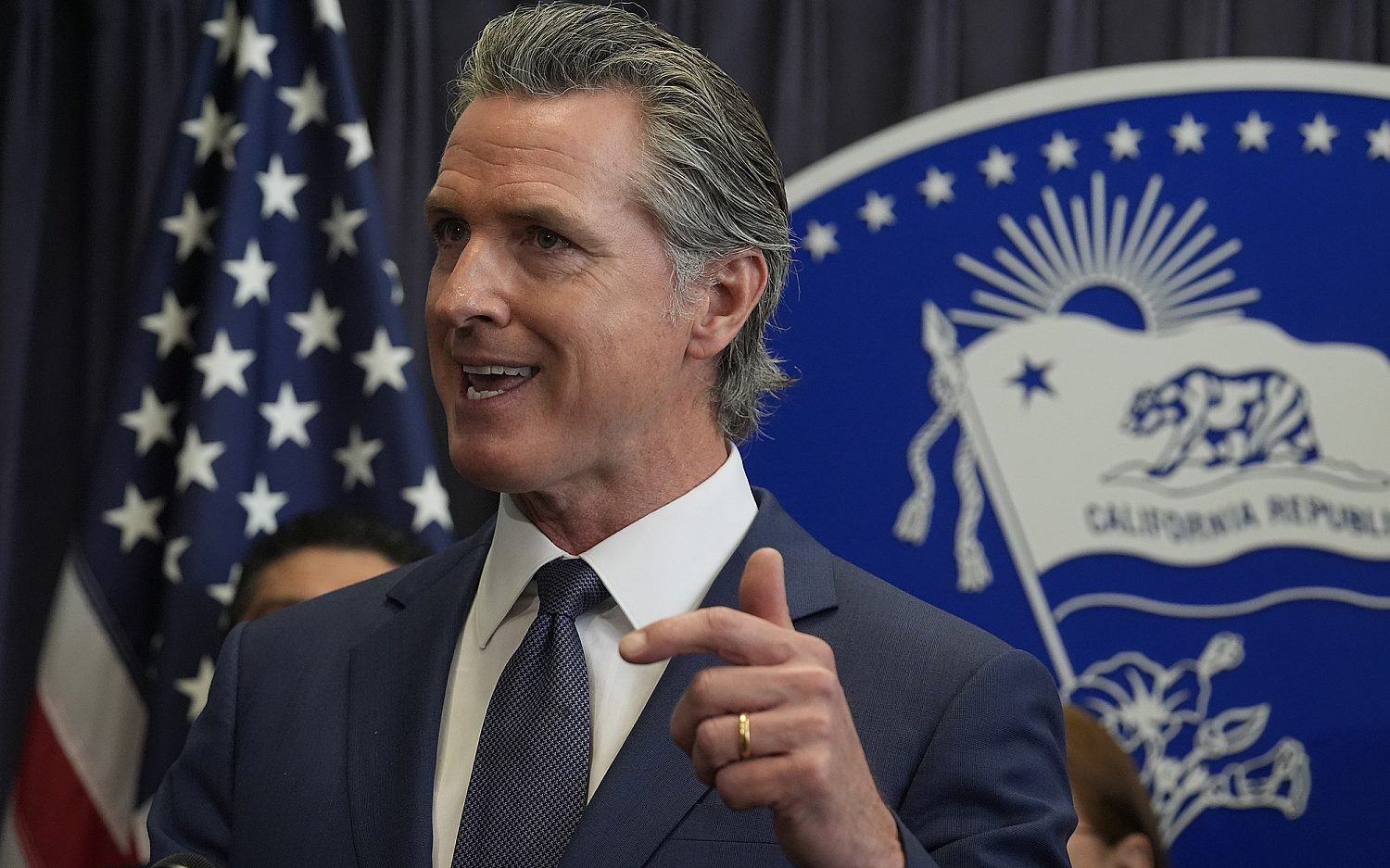Six factors in overturning Roe v. Wade
What’s at stake for the pro-life movement in the 2016 election … and elections after that
The 2016 election reminds us, like no election since 1968 (when Richard Nixon was elected and named four justices), that the Supreme Court rests on politics and political victories. The U.S. Constitution establishes that the Supreme Court is made up of justices who are nominated by the president and confirmed by the Senate, who are elected. Changing Roe v. Wade or other destructive Supreme Court decisions, therefore, rests unavoidably on political victories that can change the justices.
Abraham Lincoln made this point, in reference to the court’s disastrous Dred Scott decision—which prohibited Congress from excluding slavery from the Western territories—during the 1858 election in his Galesburg debate with Stephen Douglas: “the Dred Scott decision … never would have been made in its present form if the party that made it had not been sustained previously by the elections … the [‘]new Dred Scott decision[’] deciding against the right of the people of the States to exclude slavery, will never be made, if that party is not sustained by the elections.”
One way to view the history of the past 40 years is that the pro-life movement has made strong electoral and legislative gains, only to be blunted by the Supreme Court choices of pro-abortion presidents. Bill Clinton nominated Justices Ruth Bader Ginsburg and Stephen Breyer; Barack Obama chose Justices Sonia Sotomayor and Elena Kagan. These four hold to the most extreme interpretation of Roe—abortion for any reason, at any time of pregnancy. And they all voted in June in the court’s Hellerstedt decision to strike down common sense health and safety regulations for abortion centers in Texas. If it weren’t for the Clinton and Obama presidencies, there would likely be no pro-Roe justices on the court today. (Some will point to the poor Supreme Court selections of Republican presidents, but these tend to prove the political point: They were arguably forced, in the cases of Anthony Kennedy and David Souter at least, by Democratic-controlled Senates in place at the time.)
Too many pro-life Americans have said over the past 30 years “Abortion is settled. Therefore, I can vote for Bill Clinton and Barack Obama.” But then they voted for presidents who put four pro-abortion justices on the court who have voted to solidify or extend Roe—an unfortunate, self-fulfilling prophecy.
Though Roe still stands, the objective evidence points to impressive electoral and legislative pro-life gains over the past 40 years, including enhanced state law protection for the unborn child through fetal homicide and other laws, enhanced federal law protection for the unborn child through the unborn victims of violence law and other laws, significant state legal limits on abortion, and a Republican Party that is more pro-life than at any time since Roe v. Wade, as we were reminded by the recent death of Phyllis Schlafly, who played a key role in that transformation. (It’s fair to say that there has never been a national election that so starkly contrasts the pro-life platform of the national Republican Party and the pro-abortion platform of the national Democratic Party.).
Of course, to these gains others could be added, such as the creation of an impressive network of thousands of pregnancy care centers across the country, though this has been done largely by private means, outside the realm of politics and legislation.
The movement’s electoral and legislative gains over the past four decades dovetail remarkably with many of the six factors that Supreme Court justices have traditionally examined in deciding whether to overturn a prior decision. (Lawyers call this stare decisis.) These show that the work of the pro-life movement has served to fulfill those factors in a compelling way.
These factors are important for two reasons: They show just how much has changed in America since 1973, and they provide important focus for future efforts to further weaken the foundations of Roe v Wade.
1. Settled precedent: Roe v. Wade is clearly unsettled. The Supreme Court remains divided over Roe. Supreme Court nominations are still fought over the existence of Roe, as the Merrick Garland nomination in 2016 shows once again. The Republican Party platform and the Republican presidential primary candidates have consistently opposed Roe. There has been strong state resistance; there are working pro-life majorities in 30 state legislatures. Fifteen states have passed 20-week limits since 2007, which directly challenge the court; two other states have passed 12-week and six-week limits. Only a tiny minority of Americans support the sweeping scope of Roe. Public agitation continues in many ways, perhaps most visibly through the annual March for Life in Washington, a national network of pregnancy care centers, and state legislative limits on abortion.
The court’s Hellerstedt (Texas) decision in June 2016 tends to demonstrate continued confusion, flips and flops, and unsettling. Whether Hellerstedt proves to be a speed bump or a major obstacle may be determined by the outcome of the November presidential and Senate elections.
2. Wrongly decided: Roe v. Wade has been subject to intense and regular scholarly criticism and sustained public criticism that it was “wrongly decided.” Roe has no foundation in the text, structure, or history of the Constitution. The justices abandoned the original rationale for Roe in 1989 and dreamed up a new rationale in 1992—strong evidence that Roe was wrongly decided. State and federal judges continue to criticize Roe, as recently as 2015. There were two strong dissents in Roe, and four stronger dissents in 1992 in the Casey decision. The court has retreated from Roe (allowing more state discretion in limiting abortion) in four decisions: Harris (1980), Webster (1989), Casey (1992), Gonzales (2007). Scholarly criticism of Roe continues virtually every year.
3. Unworkable: In Roe, the justices assumed a self-appointed role as “the national abortion control board” and controls standards for every abortion center in America. In effect, the justices wrote and imposed a new national abortion law, and the justices have to monitor and administer it, directly and through the lower federal courts. The justices are incompetent to play that role; they can’t act as diligent public health administrators. The court’s abortion doctrine keeps changing—as Hellerstedt shows once again—and lower courts have struggled to apply it. The Supreme Court has chosen to avoid the abortion issue by avoiding new cases, neglecting its self-appointed role, leaving substandard abortion facility conditions and providers and threats to women’s health in its wake.
4. Change of facts: This factor is, frankly, difficult to assess because the justices in 1973 did not have any evidentiary record on which to base their decision. They created no baseline grounded in fact, as I lay out in detail in my book, Abuse of Discretion: The Inside Story of Roe v. Wade. Nevertheless, many of the assumptions on which the justices justified Roe have changed considerably. Ultrasound came on the scene shortly after Roe and permanently changed public opinion. It is virtually undisputed as a matter of science that a new, distinct human organism comes into existence during the process of fertilization. Most abortions are not performed by doctors from “the Mayo Clinic” or by the woman’s “own doctor.” There has been a growing body of international medical studies, from many different countries, finding long-term, increased risks to women after abortion. The annual number of abortions has declined considerably since 1992. Nations face population implosion, not population explosion.
5. Change of law: State and federal law has also changed considerably since 1973 to protect women and unborn children. The legal disabilities that burdened pregnant women before 1970 have been repealed by Congress or state legislatures. Employment discrimination against pregnant women is prohibited by federal statute and by laws in all 50 states. Women’s rights have expanded due to federal and state legislation, and judicial decisions, all independently of Roe v. Wade. States have expanded legal protection for the unborn child in property, tort, and criminal law, in many states from conception. The court’s “viability” doctrine in abortion law has been virtually abandoned in property, tort, and criminal law. “Save Haven” laws have been passed in all 50 states, allowing a woman to leave her newborn at a safe location.
6. Reliance interests: When the justices refused to overturn Roe in 1992, they emphasized this “reliance” factor over all others. They assumed that women have come to rely on abortion as a backup to failed contraception for equal opportunity in American society. It was merely a hunch; they provided no evidence for this assumption. Several factors contradict it. Few states have enforceable abortion prohibitions on the books. If Roe was overturned today, abortion would be legal tomorrow in 40 to 45 states because there are no effective legal prohibitions. Contraception methods have expanded in number and effectiveness. Since 1992, the annual number of abortions has declined significantly. Since 1992, a growing body of international peer-reviewed medical studies has found evidence of long-term risks of abortion.
These six factors have been increasingly fulfilled by social and legal changes, but progress is not inevitable. Planned Parenthood, the largest abortion provider in the nation, and numerous wealthy foundations and George Soros and Warren Buffett and the pro-abortion organizations they fund are all working overtime to prop up Roe v. Wade.
Although the pro-life movement in America has made significant gains, its ultimate challenge is winning political victories, over a significant period of time, to change the court. Ronald Reagan was elected in 1980. The pro-life movement made strong gains in the 1970s and ’80s, only to have Bill Clinton elected in 1992. The pro-life movement made strong gains in the 2000s, only to have Barack Obama elected in 2008, and despite the Obama administration, strong gains were made in state legislation between 2011 and 2015.
The 2016 election and beyond
Will these gains be reversed by future elections or judicial decisions? Many gains across the states—such as the protection for unborn human lives in tort and criminal law—will not be. But the possibility of reversal in other areas may well rest on the outcome of the November elections.
The 2016 presidential election could well decide the future of Roe v. Wade or could result in an abortion stalemate in America for decades, as Bill Clinton’s election did. Roe was on the ropes in 1989 when the court decided the Webster case from Missouri. Roe was on the ropes again in 1992 when the court decided the Casey case from Pennsylvania. A second term for George H.W. Bush might well have resulted in anti-Roe replacements for Justices Byron White and Harry Blackmun, who retired in 1993 and 1994 respectively.
A mother-child ethic, which makes the case in the courts, legislatures, and the media that abortion is bad for both, is necessary going forward. This has changed the public debate in recent years, and precisely targets public opinion and the reasons that the justices use for sticking to Roe. Rebutting the myth that women “rely” on abortion to their benefit, for equal opportunity, has been, and remains, the great challenge for the cause for life going forward.
Two pro-abortion presidents have slowed but not stopped the pro-life movement. Another pro-abortion president will likely extend the timeframe for success. For how long will be shaped by numerous factors, including the November elections. But it’s clear: Electoral victories are necessary to change the Supreme Court and prevent unelected judges from perverting the Constitution and imposing their personal prejudices on the people.
An actual newsletter worth subscribing to instead of just a collection of links. —Adam
Sign up to receive The Sift email newsletter each weekday morning for the latest headlines from WORLD’s breaking news team.




Please wait while we load the latest comments...
Comments
Please register, subscribe, or log in to comment on this article.